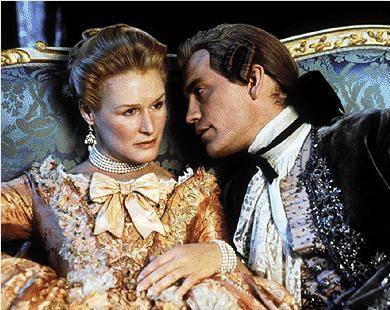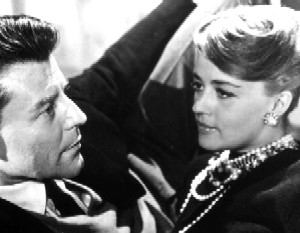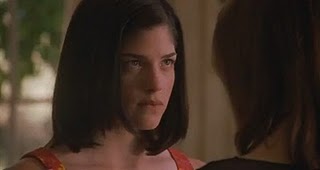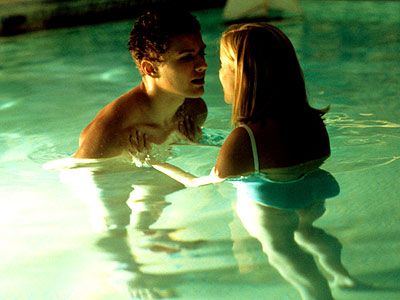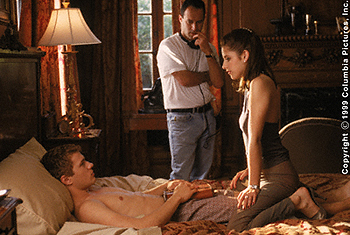From the Chicago Reader (March 5, 1999). — J.R.
Cruel Intentions
Rating ** Worth seeing
Directed and written by Roger Kumble
With Sarah Michelle Gellar, Ryan Phillippe, Reese Witherspoon, Selma Blair, Christine Baranski, Sean Patrick Thomas, Louise Fletcher, and Swoosie Kurtz.
Cruel Intentions is the fourth movie adaptation I’ve seen of Choderlos de Laclos’ Les liaisons dangereuses, possibly the best French novel of the 18th century. It’s also the third version in English — though the first to reconfigure the plot as a contemporary teenage sex comedy. Will it be the last? Considering how serviceable the story is, it’s easy to imagine it being dusted off every decade or so for use in that dubious genre. The substitution of teen yuppies for 18th-century aristocrats isn’t a precise match — as some awkward carryovers of characters’ names makes clear — yet surprisingly, writer-director Roger Kumble comes close to pulling this off. (A writer on such comedies as Dumb and Dumber, Kingpin, and National Lampoon’s Senior Trip, Kumble’s art-movie profile appears to be nonexistent.) He sets the story in and around Manhattan, Sin City itself, and makes the scheming protagonists, Kathryn Merteuil (Sarah Michelle Gellar) and Sebastian Valmont (Ryan Phillippe), stepsiblings enrolled at an exclusive prep school just outside the city. (In the novel they’re former lovers and unrelated.)
The last two adaptations, both in English and in period costume and settings, came out ten years ago, a few months apart. Dangerous Liaisons was an adaptation of Christopher Hampton’s play directed by Stephen Frears and starring Glenn Close, John Malkovich, Michelle Pfeiffer, and Keanu Reeves; Valmont was adapted by Jean-Claude Carriere, directed by Milos Forman, and starred Annette Bening, Colin Firth, Meg Tilly, and Fairuza Balk. Almost three decades earlier we had Roger Vadim’s contemporary French version, now called Dangerous Liaisons 1960, written by Roger Vailland and Claude Brule and starring Jeanne Moreau, Gerard Philipe, Annette Vadim, and a very young Jean-Louis Trintignant.
Like Emily Bronte’s no less brilliant 19th-century novel Wuthering Heights, Les liaisons dangereuses seems infinitely adaptable to the screen even though no movie could possibly capture its brilliance or its essence. In the case of Wuthering Heights the main body of the story, told in flashback, is filtered through the consciousness of two very square and relatively uncomprehending individuals — the narrator, Mr. Lockwood, and a nurse called Nelly Dean — so its romantic fury is supplied to a large degree by the imagination of the reader. Such an elliptical manner of telling a tale probably couldn’t work in a movie, because the camera tends to function independently of offscreen narrators, conveying far more than could correspond to a single voice — which is probably why filmmakers from William Wyler to Luis Bunuel to Jacques Rivette haven’t even tried to approximate Bronte’s form.
In the case of Les liaisons dangereuses, which consists of 175 letters written by about a dozen characters, the problems are even more intractable. For starters, the letters are preceded by a “publisher’s note” claiming that the letters are fictitious and then an “editor’s preface” claiming that they’re genuine — yet both note and preface are written by Laclos. The ambiguities don’t stop there. The multiple perspectives offered on the characters and events by the correspondents guarantee that a sense of the truth has to be gleaned from a critical reading that synthesizes their interpretations according to the predilections of the reader; no fully authoritative observer or participant ever steps in to settle the issues once and for all. So it seems inevitable that any film version must discard the epistolary form and settle on a relatively objective mode of narration, eliminating the doubts sown in the original and imposing an interpretation of its own.
None of the movie adaptations so far has had the guts to make the story and its implications quite as harsh as they are in the novel, which was published only seven years before the French Revolution and can be read in part as a social indictment that makes that upheaval seem logical if not quite inevitable. All four movies start off as if they intend to be just as scary as the novel but then wind up simplifying the issues, either by letting a doomed sympathetic character survive (as in Cruel Intentions) or by sentimentalizing the motives or the fates of the more evil characters (as in the other three movies). Curiously, the most puritanical and in some ways the silliest of the four is the Vadim, made on the cusp of the “swinging 60s” by the alleged libertine of the French New Wave and populated by jet-setters strenuously trying to seem wicked; it’s typical of the project’s wrongheadedness that it makes the two scheming lead characters (Moreau and Philipe) husband and wife rather than former lovers. By making them stepsister and stepbrother, Cruel Intentions tries to be wicked in a different way; they haven’t been lovers in the past, but the stepsister promises sex to the stepbrother, who’s been lusting after her for ages, in exchange for carrying out her revenge plot.
It isn’t as good as Clueless, but just as that teen movie did a better job with Jane Austen than all the supposedly legit screen adaptations of her novels that flanked it, Cruel Intentions is less presumptuous than the efforts of Vadim, Frears, and Forman, which were all presented as prestigious cultural objects. Vadim used a Swiss ski resort and jazz by Thelonious Monk and others on his sound track like ambient wallpaper, the same way Frears and Forman threw period decor and costumes in our faces — as a way of telling us that this is not only art, but high-priced goods. This is the same dishonest gesture offered by standard Miramax period “art-movie” fluff such as Shakespeare in Love, an attempt to flatter us that we’re somehow getting something serious and educational, not simply consumerist and sensational. By contrast, Cruel Intentions makes no bones about being a piece of sleaze, and it professes in its credits only to have been “suggested” by the Laclos novel.
As in the novel, Kathryn, who’s just been discarded and humiliated by a lover, enlists Sebastian, a notorious lady-killer, to seduce the virgin Cecile (Selma Blair), who’s become the focus of the ex-lover’s attentions. But Sebastian is initially more interested in pursuing another virgin, Annette Hargrove (Reese Witherspoon), who’s just published an article in Seventeen magazine declaring that she won’t have sex before marriage and whose father has coincidentally just become the school’s headmaster. Kathryn and Sebastian strike a wager: if he manages to screw Annette before school starts, Kathryn will “fuck [his] brains out”; if he fails, she gets his 1956 Jaguar.
In short, it’s silly stuff with a saucy edge. The action is framed by aerial shots over the Long Island Expressway dipping down to a speeding convertible with a briefcase next to the driver; an immense cemetery may be part of the setting, but pop exhilaration is the operative mode, a quality conspicuously missing from the other movie versions. The opening scene in Manhattan showing Sebastian outsmarting a glib psychotherapist — which has no counterpart in the novel — seems somewhat forced and contrived, but it does set up the character’s cockiness with a minimum of fuss. (Incidentally, the psychotherapist is played by Swoosie Kurtz, who played Cecile’s mother in the Frears version.)
By the time Sebastian starts cruising Annette, her principled virtue has come to seem as admirable and as potent, hence as sexy, as Kathryn’s amorality — which offers at least a whiff of the novel’s moral and erotic dynamics. (By contrast, Cecile remains something of a bimbo throughout this and all the other film versions.) Yet this whiff is conveyed existentially, in the movie’s own terms. Neither the characters nor the events are exactly the same as those of the novel, but some of the same spirit comes across — not inside a literary crypt or a Masterpiece Theatre spread but within a dopey Hollywood movie, where it improbably and unexpectedly belongs.


